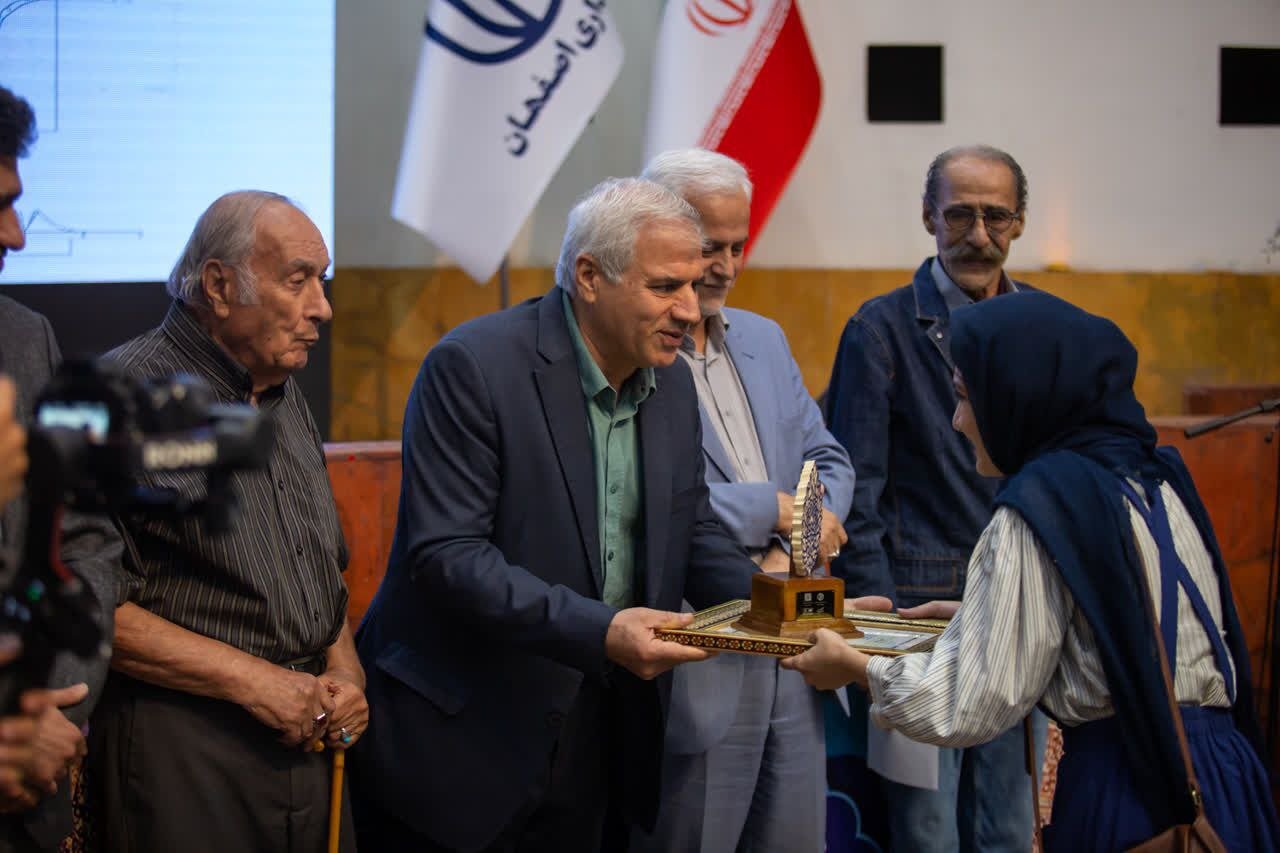Cultural heritage contest values Isfahan’s visual identity, official says

TEHRAN – Isfahan’s cultural heritage contest could value the central city’s visual identity, minister advisor for cultural heritage, Mohammad-Hassan Talebian has said.
He made the remarks during the award ceremony of the national competition in Isfahan on Thursday.
It is through such events that the city can receive ideas for urban furniture and a unified visual identity, he added.
By holding such events, Isfahan can be re-aware of its cultural and historical heritage and look again at its historical monuments, said Talebian during the award ceremony, he mentioned.
By organizing such competitions, other provinces can learn how to value their history, culture, and art, he noted.
The winners of different categories were announced during the award ceremony, which was attended by Isfahan Mayor Ali Qasemzadeh and a number of cultural officials.
The competition aimed to bring practical designs for the environment around Isfahan’s 12 national and world heritage sites based on patterns and decorative arrays in these buildings in the fields of environmental graphics, beautification, and urban furniture.
Winners have been selected from 80 artists who created practical ideas and designs inspired by these cultural heritages.
Soaked in a rich history and culture, Isfahan was once a crossroads of international trade and diplomacy in Iran. Now, it is one of Iran’s top tourist destinations for good reasons. The ancient city is filled with many architectural wonders such as unmatched Islamic buildings, bazaars, museums, Persian gardens, and tree-lined boulevards. It’s a city for walking, getting lost in its mazing bazaars, dozing in beautiful gardens, and meeting people.
The city has long been nicknamed as Nesf-e-Jahan which is translated into “half the world”; meaning seeing it is relevant to see the whole world. In its heyday, it was also one of the largest cities in the region with a population of nearly one million.
Isfahan is renowned not only for the abundance of great historical bridges but also for its ‘life-giving river’, the Zayandeh-Rood, which has long bestowed the city an original beauty and fertility. The cool blue tiles of Isfahan’s Islamic buildings, and the city’s majestic bridges, contrast perfectly with the encircling hot, dry Iranian countryside.
The huge Imam Square, best known as Naghsh-e Jahan Sq. (literary meaning “Image of the World”), is one of the largest in the world (500m by 160m), and a majestic example of town planning. Built in the early 17th century, the UNESCO-registered square is punctuated with the most interesting sights in Isfahan. Modern Isfahan is now home to some heavy industry, including steel factories and a nuclear facility on its outskirts, however, its inner core wants to be preserved as a priceless gem.
ABU/AM
Leave a Comment